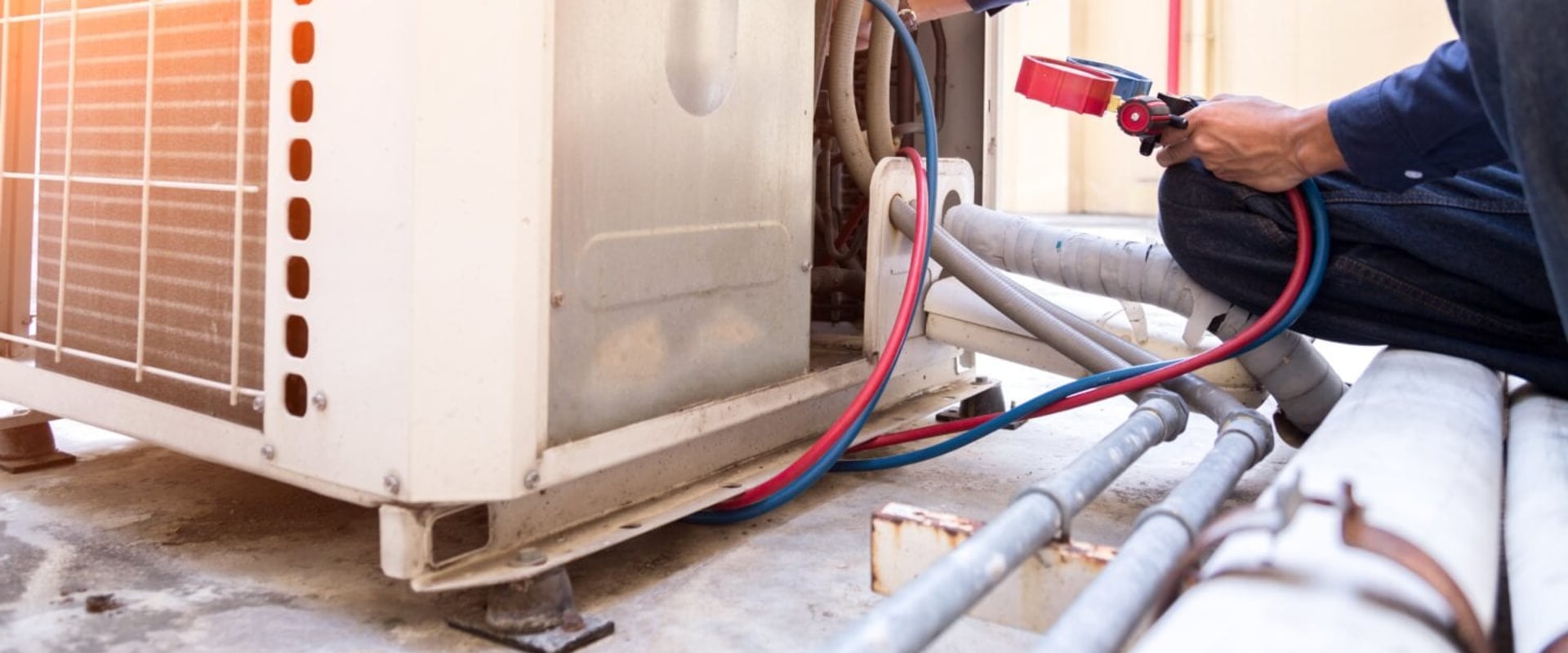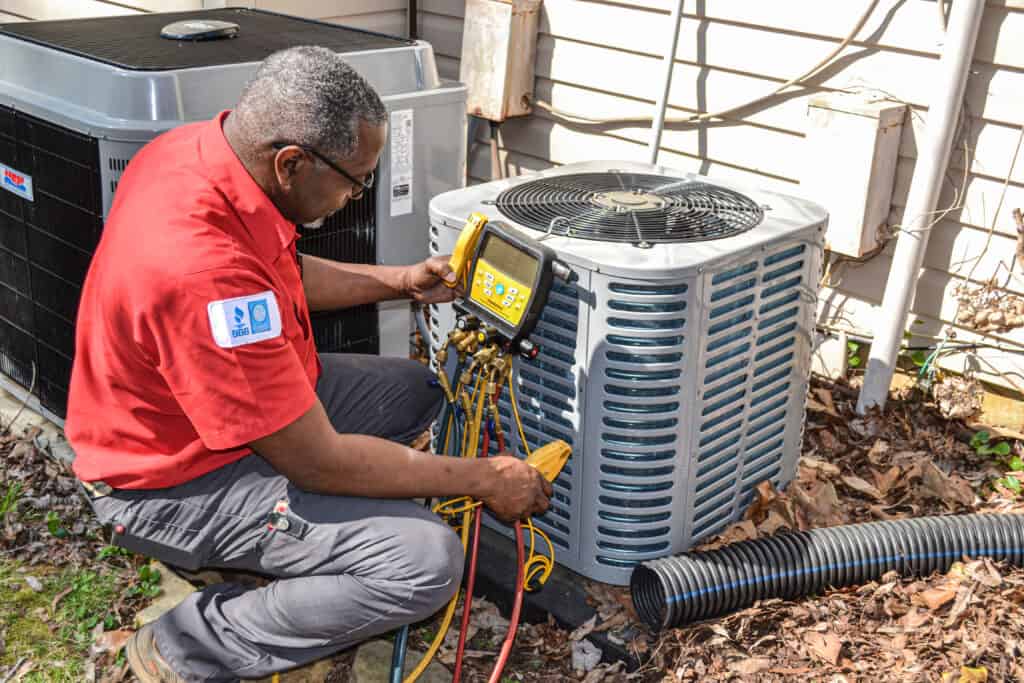Exactly How to Enhance Power Efficiency With Your Cooling And Heating System and Heating System Upgrades
As energy prices continue to increase, the relevance of enhancing energy effectiveness through heating and cooling system and furnace upgrades can not be overstated. Evaluating your current system's efficiency and considering energy-efficient choices are essential first steps. In enhancement to picking designs with high SEER and AFUE rankings, optimizing thermostat setups and enhancing insulation can significantly affect general effectiveness. Nevertheless, the trip in the direction of making the most of energy efficiency does not end there; comprehending the nuances of routine upkeep and its long-term benefits is equally vital. What are the certain methods that can bring about considerable savings and improved convenience?
Evaluate Your Present System
Before starting any upgrades, it is crucial to evaluate your existing heating and cooling system and heater to recognize their efficiency and performance. This preliminary evaluation supplies a foundation for recognizing locations that call for improvement and informs decisions concerning prospective upgrades. Begin by checking out the age of your cooling and heating system, as outdated versions might do not have modern energy-saving attributes.

Power intake records will certainly likewise contribute in assessing your system's operational prices. By analyzing energy expenses, you can figure out patterns of energy usage and determine spikes that call for more examination. Last but not least, consider performing a specialist power audit to obtain a professional analysis of your system's efficiency. This thorough examination will certainly direct you in making informed choices around required upgrades, ensuring that your investments in power performance generate the wanted benefits.
Upgrade to Energy-Efficient Models
Upgrading to energy-efficient models is an essential action in improving the overall efficiency of your a/c system and heating system. These modern units are created to consume much less energy while supplying ideal heating & cooling, causing considerable expense financial savings on energy costs and a minimized environmental footprint.
When thinking about an upgrade, look for designs that have high Seasonal Power Efficiency Ratios (SEER) for a/c and Annual Fuel Use Effectiveness (AFUE) rankings for furnaces. These ratings indicate the performance of the units, with higher numbers showing far better efficiency. Energy-efficient models often incorporate sophisticated modern technologies, such as variable-speed electric motors and wise thermostats, which additionally improve power financial savings.
In addition, several energy-efficient cooling and heating systems are geared up with improved insulation and far better securing, which decrease energy loss and enhance interior convenience. HVAC Farmington MO. While the initial financial investment might be higher, the long-lasting financial savings on power prices and potential tax obligation rewards for using energy-efficient devices can offset this cost significantly

Eventually, upgrading to energy-efficient models not only adds to a more sustainable future yet likewise boosts the comfort and performance of your home or service.
Optimize System Settings
To make the most of the efficiency of your cooling and heating system and furnace, it is necessary to optimize system setups customized to your particular needs. Begin by setting your thermostat to an energy-efficient temperature level. The U.S. Department of Energy suggests a winter months setting of 68 ° F when you are wide awake and reducing it while you sleep or are away. In summer, go for 78 ° F during the day.
Utilize programmable or smart thermostats that permit you to schedule temperature changes immediately. This ensures your system operates only when needed, reducing energy usage. In addition, ensure that your system is readied webpage to run in the correct mode-- home heating in resource winter months and cooling in summertime-- while preventing the constant follower choice unless required for air circulation.
Consistently review and adjust settings based on seasonal modifications, occupancy patterns, and specific comfort preferences. Also, make sure that vents and signs up are unobstructed, permitting optimum air movement. Lastly, consider zoning systems that make it possible for personalized comfort in various locations of your home, better improving efficiency. By fine-tuning these setups, you can attain significant power financial savings while preserving a comfortable living setting.
Improve Insulation and Sealing
A well-insulated home is vital to maximizing the efficiency of your Heating and cooling system and heater. Appropriate insulation lowers the work on these systems, thereby conserving power and reducing utility costs.
Along with insulation, securing voids and cracks is vital. Pay special interest to windows, doors, and any type of penetrations in walls, such as electric outlets and plumbing components. Weatherstripping and caulking can successfully seal these openings, stopping drafts that jeopardize your HVAC efficiency.
Moreover, make certain that air ducts are appropriately insulated and secured. Leaking air ducts can cause considerable power losses, lowering system efficiency. Making use of mastic sealer or metal tape to secure air duct joints can improve air movement and efficiency.
Set Up Regular Maintenance
Regular maintenance of your HVAC system and heating system is necessary for making certain optimal performance and check my reference longevity. Set up examinations and maintenance can identify prospective problems prior to they escalate, preventing expensive repair work and inefficiencies. Throughout upkeep, a certified professional will clean and replace filters, check cooling agent levels, evaluate ductwork for leakages, and evaluate overall system procedure. This proactive approach not just improves energy efficiency but likewise extends the life expectancy of your tools.
It is advised to arrange upkeep at the very least two times a year-- when in the spring for the cooling system and as soon as in the succumb to the furnace. hvac. Normal maintenance aids maintain regular indoor temperature levels, guaranteeing convenience throughout the year. Furthermore, a well-kept system operates a lot more effectively, which can cause obvious reductions in power costs
Overlooking upkeep can cause lowered efficiency, enhanced wear and tear, and inevitably, system failing. By focusing on regular solution, property owners can stay clear of unexpected failures and ensure their cooling and heating system and heater run at peak efficiency. Spending in maintenance is an important step in enhancing power efficiency and producing a more sustainable home atmosphere.
Conclusion
To conclude, boosting energy effectiveness within HVAC systems and furnace upgrades is crucial for lowering energy intake and boosting overall comfort. A methodical method that includes analyzing the present system, purchasing energy-efficient models, optimizing setups, improving insulation, and scheduling regular maintenance can lead to significant advantages. Applying these approaches not only lowers energy costs but likewise adds to a much more sustainable setting, making it imperative for property owners to prioritize these upgrades.